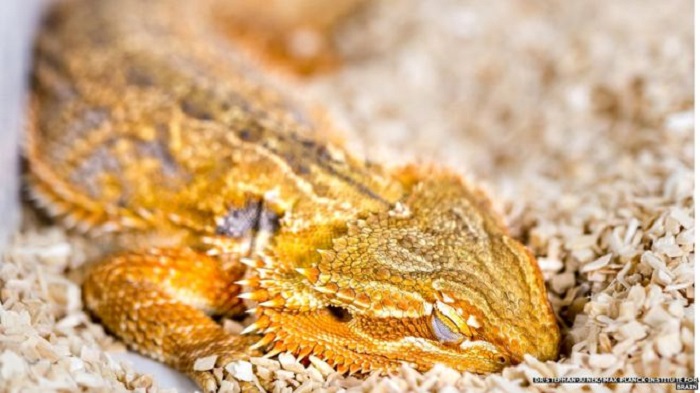Lizards share sleep patterns with humans

Now, a study of the bearded dragon - a popular pet - suggests these distinctive sleep rhythms emerged hundreds of million of years ago in a distant ancestor.
They could even have been present in dinosaurs, say scientists.
Some form of sleep has been described in everything from worms to people.
But the sleep phases of humans and birds are very distinctive, involving cycles of deep (slow-wave) sleep, followed by awake-like brain activity and rapid eye movement (REM).
Faster rhythm
German researchers recorded the brain activity of bearded dragons when they were sleeping.
They found that similar to humans and other mammals, the reptiles showed cycles of eye movements and deep sleep.
However, while humans typically go through four or five 90-minute cycles of slow-wave sleep and REMs, the lizard sleep rhythm is faster and more regular, resulting in hundreds of much shorter cycles.
And in lizards the activity seems to originate from a different brain area from mammals.
"Although similar to mammalian sleep, lizard slow-wave sleep and REMs resemble a stripped-down version of the richer mammalian repertoire," the scientists write in the journal Science.
Common ancestor
The fact that reptiles, birds and mammals share similar sleep patterns suggests these evolved in a common ancestor some 300 to 320 million years ago.
At the time, the land was ruled by amniotes - a class of four-legged, backboned animal that laid eggs protected by amniotic membranes.
"Those were probably small and lizard-like animals," said lead researcher Dr Gilles Laurent of the Max Planck Institute for Brain Research in Frankfurt, Germany.
"They lived between 300 and 320 million years ago, at a time when the earth`s continents formed a single land mass."
It could be that the true source was even more ancient, he added.
"This would require evidence of REMs and slow-wave sleep from amphibians or fish, which has so far been negative," he said.
"But it may be worth checking again."
Ancient origin
Lizard sleep may be similar to the sleep patterns of our ancestors, said Dr Laurent.
And lizards might even dream in a rudimentary way.
Asked if dinosaurs slept, he said: "I wish I knew but it seems likely that they expressed REM and slow-wave sleep."
Thanos Siapas, professor of computation and neural systems at Caltech, California, who was not involved in the research, said it shed new light into how the architecture of sleep evolved.
"The data and analysis are very compelling and suggest an ancient origin of the two alternating stages of sleep, REM and slow-wave sleep," he said.
"Comparing the circuit mechanisms and role of these network events across species may provide critical new insights into their function."














































